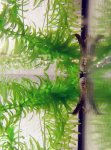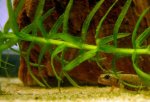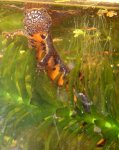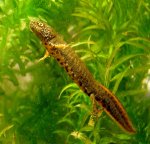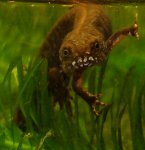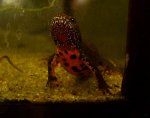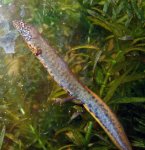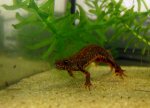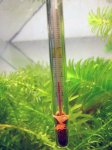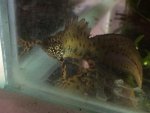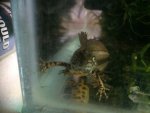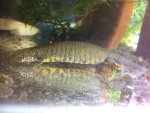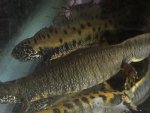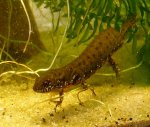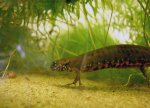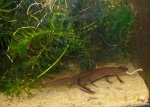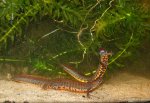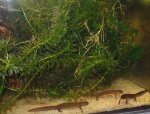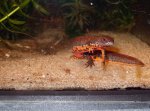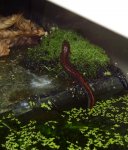Jensino-care-sheet
Thanks to all for over 2,000 views! I am so glad that you appreciate my work. :happy:
I want to write a short summary of how I've kept my newts so far.
So here is my Jensino-care-sheet:

Description:
Triturus dobrogicus has a brownish to black back and a bright orange, sometimes even red belly. The males develop a very high, toothed, crest during the breeding season, and a white/bluish band along each side of the tail.
They are more slender and smaller than other Triturus species and their skin is smoother.
Natural Range:
My particular animals origin from Lake Razim, Romania.
Housing:
I keep my newts in an aqua-terrarium with the dimensions 80x35x40cm with an aquarium cover that includes 2xT8 fluorescent tubes each 18 W. I removed the lids, so that no heat accumulation forms. But compared with T5 technology, T8 tubes didn't get that warm anyway. But since I am living in a frickin' cold climate with mild summers, high temperatures aren't an issue to me or my newts.
Otherwise I am using a very simple setup. A thin layer of sand, some floating
Elodea densa as well as
Leptodictyum riparium to improve the water-quality and a few rocks to aid skin shedding. No Filtration, but therefore frequent water changes every week (but to be honest sometimes I am lazy and skip a few weeks).

For the near future I am planning to get them a larger Aquarium (100x50x40cm) with a small terrestrial part included as well and provide a more complex setup with deeper substrate, more plants, a filtration-system and maybe a LED-panel.
Triturus dobrogicus live mostly aquatic, that's why there was no need for a separate terrestrial setup so far, except for hibernation. My hibernation setup is explained in post #9.
The overall temperature regime is as follows:
From February to April the temperatures varies between 5 and 15 °C, from May to August between 15 and 25 °C, from September to November it is 10 to 20 °C. From November to January I hibernate my newts in a fridge at temperatures around 5 °C.
Feeding:
I am really obsessed with diversifying the diet of my newts. Here is a list of what I feed them regularly (in alphabetical order):
Artemia,
Asellus,
Daphnia, Earthworms,
Enchytraea worms, gnats larvae, mayfly larvae, mosquito larvae,
Tubifex.
Recently I am trying to get my hands on "Dry Lake Clam Shrimps" and
Hyalella azteca.
When they were freshly metamorphosed I fed them on a daily basis. Now, as sub-adults, I feed them 3-4 times a week.
Best of luck with your newts. I will keep you updated about mine.




